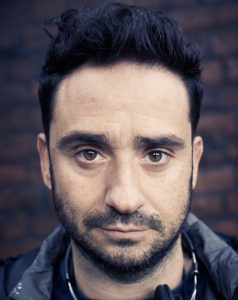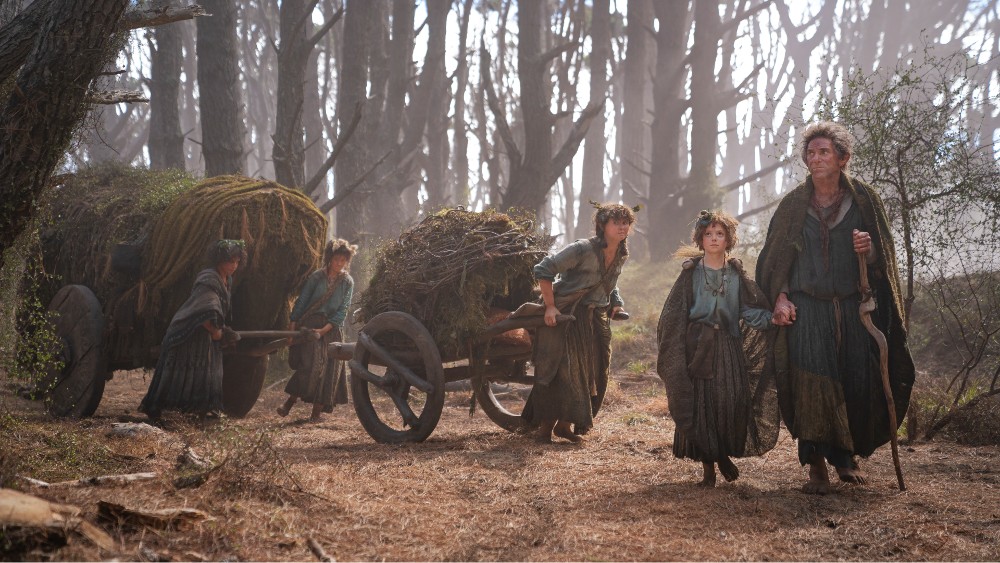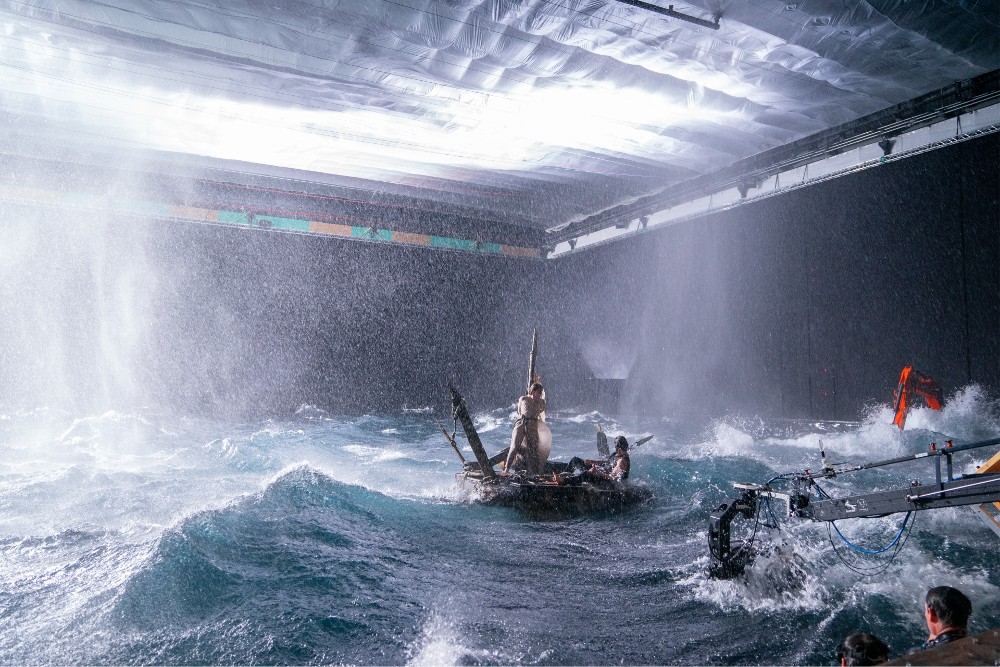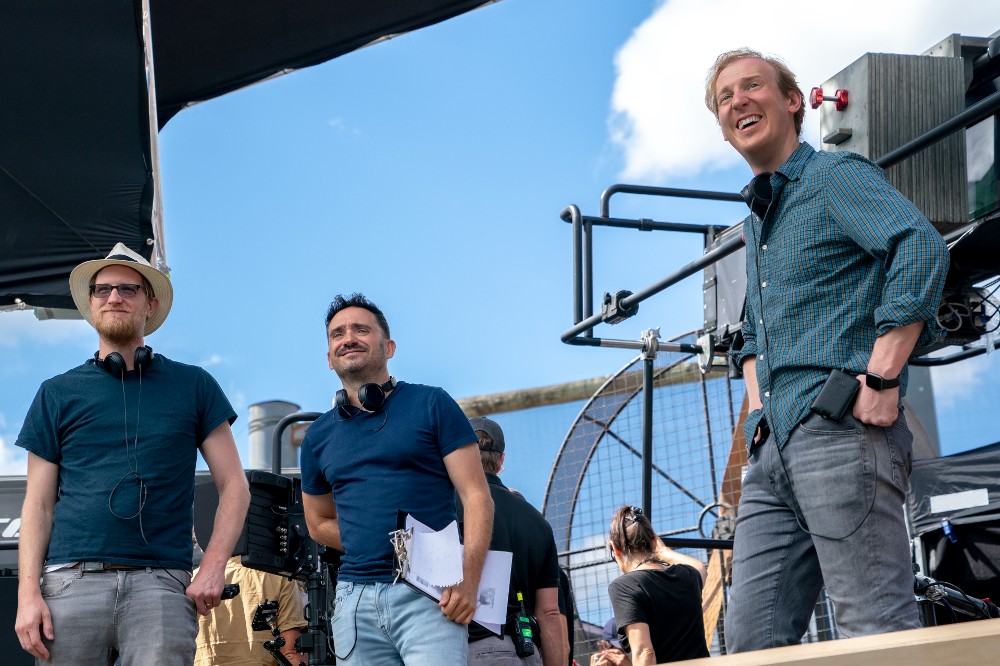Spanish filmmaker J.A. Bayona has been turning heads with his filmmaking talent ever since his 2007 horror film The Orphanage, which was produced by Guillermo del Toro. That led to acclaimed films such as The Impossible, for which Naomi Watts received an Oscar nomination, and A Monster Calls, as well as the 2018 global blockbuster Jurassic World: Fallen Kingdom.
The Prime Video series The Lord of the Rings: The Rings of Power marks Bayona’s second foray into television after directing a few episodes of Showtime‘s Penny Dreadful, but it’s a much bigger venture in terms of its size and scale, as would be expected from anything based on the work of legendary author J.R.R. Tolkien.
Bayona directed the first two episodes of the show, setting up the journey of a number of new individuals from Middle Earth, and the series takes place thousands of years before the events depicted in The Hobbit.
Above the Line spoke with Bayona a few months back over Zoom for this interview, in which he discussed his approach to The Rings of Power and working with its showrunners to find the ensemble cast.

Above the Line: What was the impetus to take on something as huge as Lord of the Rings? Did you pitch yourself for the project, or did Amazon come to you?
J.A. Bayona: Actually, everything was very unexpected and very quick. I got the call from the showrunners. They wanted to meet me and offered me the possibility of being involved in Lord of the Rings. I love the books but I didn’t know, at the time, what the plan was. I didn’t know if the whole thing was going to be a remake of the movies, [so] I was a little cautious, but then my producing partner, Belén Atienza, and I sat down with Patrick [McKay] and JD [Payne], and I loved the idea behind the show.
This idea of taking the [book’s] appendix, so we had a plan set up by Tolkien, and then fill the gaps with new characters, felt right, and then I read the scripts and I loved them. Also, I noticed the love and the care that Patrick and JD had for this world, but then I read the scripts and it was all on paper. I had the best books to go back [to] and look for help, but at the same time, the scripts were great, so, suddenly, I found myself doing Lord of the Rings. It was fantastic and pretty quick, actually.
ATL: Was Season 1 fully written or did they just have the first two episodes and outlines or treatments for the rest?
Bayona: We talked about the whole arc of the show. We knew what the goal was, and then we went through the specifics of the first season. We loved the idea behind it, and then I read the first two episodes and then read all the episodes right after that, but the first impression was with the first two episodes, and I really enjoyed them. I thought they were great, and I really liked the idea.
We started very quickly to design the show because we had to recreate from scratch the Seven Kingdoms for only the first two episodes. I was only involved with the first two episodes, but I had to look, with the showrunners, for the whole cast and create the designs for the Seven Kingdoms.
ATL: You were involved with this well before COVID happened, I imagine…
Bayona: I was supposed to be in New Zealand for nine months, and the whole thing turned out to be a little bit longer, like a year and a half.
ATL: Which is about the same length of time as if you were making a whole movie — two episodes, two hours.
Bayona: A big movie, though. [laughs]
ATL: I’m always curious about when directors board a project like this because you’re very involved with the look of the whole show and its design. So are you involved in choosing the production designer and the VFX supervisor and everyone else who will stay on for the whole season after you’ve left?
Bayona: Definitely. I felt very confident because we had a great group. Very quickly, I sat down with Ramsey Avery, the production designer, and [costume designer] Kate Hawley. I’m glad that we spoke the same language. Every time I sat down with Kate, for example, we started to talk about references, and we were both very excited [about] all those conversations. We had to create a world from scratch — a world that was going to be shown on the screen for the first time. Everything had to feel new [yet] familiar because you are familiar with the books, but [the show is] totally new. We went for references that were more taken out of movies and paintings. We saw some silent Russian movies and movies from [Andrei] Tarkovsky, weird references for the dwarves. We were looking for something that felt totally new, not something that we had seen before.

ATL: And were you heavily involved with casting all the actors, most of whom are fresh faces? How long did that process take, and did you try to cast a lot of folks from New Zealand since they were already down there?
Bayona: Yeah, it took months, and it was very challenging because that was in New Zealand, so it was not that easy to see the actors in person. A lot of the actors were chosen via Zoom or online, which is not the easiest thing to do. Now, we are used to it after COVID, but at that time, it felt more challenging. I’m very glad how everything turned out; I’m very [happy] with all the cast. I think all the actors were the right decisions.
ATL: I know from your previous work that you’re a fan of creatures and creature design and VFX — something you’ve worked with on all of your various films. What were you looking for when finding designers for creatures on the show?
Bayona: I really like fantasy, and I really like how to use fantasy to have a better knowledge of the world we live in, you know. In that sense, every design that we create had to have connections with the psychology behind the story. It needs to have depth. It’s not only about the aesthetics, it’s also about the idea behind it.
ATL: Do you have input in terms of finding directors for the other episodes? After you finish your two episodes or finish shooting and doing post, are you still involved?
Bayona: Because I was only responsible for the first two episodes, it was more about the directors [who] came after me [and] that they were allowed to get into editorial and see the scenes that I was shooting. They were allowed to be on set. We sat down and we talked about the story together. It was more about opening the gates to them so they were able to see what I was doing, not me going to see them. [But] it was a great collaboration. They were always allowed to [be a part of] the conversation because they were the ones [who] were going to be following the story.
ATL: It’s definitely a little different because many times on TV shows, you’re returning to the same locations, though this show might be a little different since it’s a journey that’s constantly moving forward to new lands. But when you have a location, do you have to be aware of what the other directors might have to shoot there later on?
Bayona: You’re right, but in this case, it was shot like a movie. It’s not that we shot all the scenes in one location and then we changed the location. No, no, we shot Episode 1 and then Episode 2, and then Episode 3. They were moving back to the locations in case they were needed. Most of the time, they were going back to locations that had to change a lot during the story, so we needed that time to keep working on sets while we were away shooting other scenes.
ATL: But with the different characters and their journeys, were you trying to shoot one character’s journey through those first two episodes and then move on to the next character, or were you jumping around?
Bayona: It was never like that, actually. We never mixed up the episodes.

ATL: But if, say, Galadriel has certain scenes in the first episode, did you do everything with her first in some kind of order and then focus on the next character? They all have their own separate journeys over the first two episodes, at least, so did you try to stick with one actor or character at a time?
Bayona: Yeah, yeah. For example, the Sundering Seas was a very challenging scene because we had to shoot on water. All those scenes were shot back to back.
ATL: In recent years, they’ve done a lot more virtual production, where you can do something like those scenes without actually being on water. You could do it with LED screens, but I’m not sure if that was available to you while you were shooting those first few episodes.
Bayona: No, at the time we started production on these, we were not that familiar with LED panel screens. Also, we didn’t want to get involved in that because we were in New Zealand to shoot in New Zealand. We wanted to see real landscapes, and we wanted to have sets that the actors could touch. We really were not looking for that, actually. I felt very lucky that we had great sets and great landscapes in order to work the scenes with the actors [someplace] that you can touch [and] that felt real all the time.
ATL: Were they able to finish the visual effects on your episodes while they were shooting stuff for other episodes, or was the VFX process an ongoing thing?
Bayona: Yeah, they were going on all the time. What they did was massive, so they needed to keep working non-stop all the time.
ATL: How much were you involved after your first two episodes? You’re an executive producer on the show, so were Patrick and JD showing you stuff to get your input on the other episodes?
Bayona: Yeah, yeah. At the very beginning, we sat down and read all the episodes, and we talked about the story. You’re talking [about] a small part of the beginning, but that part needs to be consistent with the whole journey. So we read all the episodes [and] sat down and talked about everything on the first season. Right after that, there was so much work to keep up with [that] we didn’t have time to keep talking about the story. I focused more on the first two episodes and then going to editorial and post-production.

ATL: I got to watch those first two episodes at Alice Tully Hall, which is where I saw a marathon of Peter Jackson’s LOTR movies 20 years ago, and the series is quite cinematic in its own right.
Bayona: Exactly. That was one of the challenging things about the show, because when we talk about television, most of the time we talk about the story, but the visuals are so important in these narratives. It felt very challenging — how we were going to find the time to recreate those worlds, [because] to recreate those visuals requires so much time [in terms] of preparation, shooting, and post-production on a television schedule. I’m glad that everybody on board had the ambition to go there. To me, the main thing is, ‘Okay, we’re going to do this, but we’re going to do it the right way, and this is the right way,’ and I’m glad everybody was in on that direction.
ATL: And you’ve already been working on your next film? That’s already filmed?
Bayona: I shot a film that I finished the shoot on Christmas. It’s called Society of the Snow. It’s based on the plane crash in the Andes back in 1972. It’s been very rewarding. So far, we did 140 days of shooting. Now we’re very into post-production, so I didn’t have that much time to be involved in the rest of the season, but I’m glad that I’m here now talking about it.
ATL: I’m really interested in that story. Is that going to be in Spanish?
Bayona: Yeah, it was great because the last time I [worked] in Spanish was 15 years ago. It was great to be back shooting in my [native] language with a cast of newcomers from Chile and Uruguay. It was a great feeling to be back on set, talking my own language.
ATL: I know it might be a little too early to tell, but do you think you’ll be able to bring the film to TIFF since you have such a great history with that festival?
Bayona: I don’t know yet, because it’s a very demanding post-production, because the environment is very important. We shot in the Andes, but also, we shot in Spain at a ski station. Visually, it’s going to be very demanding in terms of the visual effects. We’re working on it, but we still don’t have a release date.
Season 1 of The Lord of the Rings: The Rings of Power is now streaming on Prime Video.



